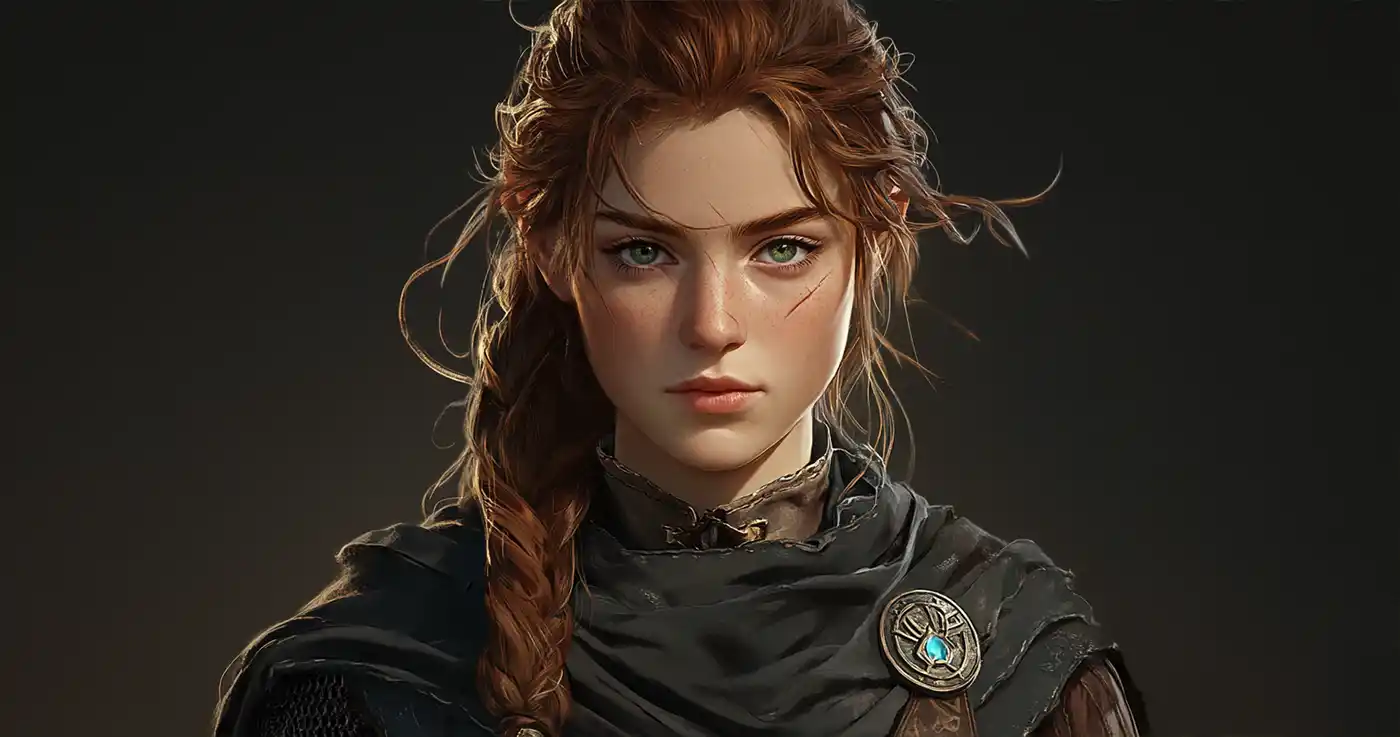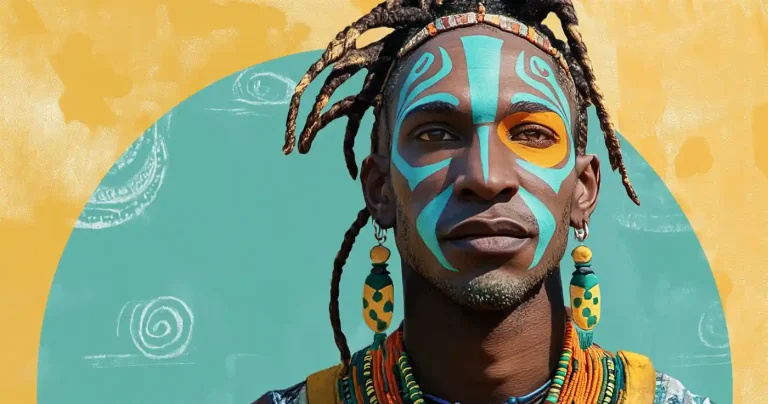Ever read a book where the main character felt as bland as a bowl of plain oatmeal? No spice, no personality—just there, existing?
That’s what happens when a character lacks strong, well-defined traits.
Character traits are the heart and soul of any story. They shape how a character talks, acts, and reacts. They make a hero lovable (or infuriating) and a villain terrifying (or secretly likable).
But here’s the thing—slapping random traits onto a character is like putting a mustache on Mona Lisa. It might be interesting, but it won’t always work.
In this guide, we’re diving deep into character traits, how to use them, and why they can make or break your story.
Let’s get into it.
What Are Character Traits? (And Why Do They Matter in Storytelling?)
Character traits are the core qualities that define who a character is.
They can be physical, emotional, or behavioral. A character might be brave, sarcastic, manipulative, or loyal. Maybe they chew gum obsessively or never say “goodbye” before hanging up the phone.
Traits affect how characters make decisions and how readers connect with them. A character who is overly ambitious might step on people to get what they want. A kindhearted one might risk everything to save a stranger.
Think about your favorite fictional characters.
- Sherlock Holmes? Brilliant, but socially awkward.
- Elizabeth Bennet? Witty, independent, but a little too judgmental.
- Darth Vader? Ruthless… but deeply conflicted.
Without strong character traits, these icons would just be names on a page.
Types of Character Traits (With Examples)
Not all character traits are created equal. Some make characters admirable, while others make them downright unbearable (in the best way).
Let’s break them down.
1. Positive Character Traits
These are the traits that make us root for a character. They’re the ones we aspire to have in real life.
Some examples:
- Brave – Faces danger head-on, even when terrified. (Katniss Everdeen, anyone?)
- Loyal – Stands by their friends no matter what.
- Resilient – Bounces back from failure stronger than before.
- Honest – Tells the truth, even when it hurts.
- Optimistic – Sees the bright side, even in disaster.
But here’s the catch: too many positive traits can make a character boring.
Nobody wants to read about a flawless, always-perfect hero. Even Superman has kryptonite.
Great characters struggle, doubt, and sometimes fail—and that’s what makes them interesting.
2. Negative Character Traits
The best characters aren’t perfect. They have flaws—sometimes serious ones.
Some examples:
- Arrogant – Thinks they’re the smartest person in every room.
- Jealous – Can’t stand seeing others succeed.
- Manipulative – Twists people to get what they want.
- Short-tempered – Blows up at the smallest inconvenience.
- Selfish – Puts their own needs above everyone else.
These flaws make characters feel real.
A villain with no redeeming qualities? One-dimensional.
A hero with no struggles? Unrealistic.
Even the best protagonists need a little bit of darkness.
Neutral Character Traits: The Gray Area of Personality
Not all character traits are strictly good or bad. Some sit comfortably in the middle, like Switzerland during a conflict.
These neutral traits can be positive or negative depending on the situation.
Some examples:
- Sarcastic – Can be hilarious… or just plain mean.
- Ambitious – Can lead to success… or turn someone into a ruthless tyrant.
- Reserved – Mysterious and intriguing… or emotionally unavailable.
- Witty – Can make them the life of the party… or the most annoying person in the room.
- Blunt – Refreshingly honest… or brutally inconsiderate.
It all depends on how the trait is used and how other characters react to it.
A sarcastic best friend? Fun.
A sarcastic police chief when you’re reporting a crime? Probably not great.
How to Choose the Right Character Traits for Your Story
Now that we’ve got all these traits, how do you actually choose the right ones for your character?
Bestselling author Rachel Aaron has a brilliant framework for this, and it’s all about something she calls “gap.”
“Gap is the difference between how you expect a character to be and how they actually are. A dog who isn’t loyal? That’s gap. A villain with a heart of gold? That’s gap. It works because it subverts expectations in the best way.”
– Rachel Aaron, from The WriteTreat online workshop sessions
This is where character design goes from decent to unforgettable.
But gap is just one piece of the puzzle.
You don’t want to just throw darts at a list and hope for the best. (Although, hey—fun writing prompt idea.)
Here are some smarter ways to choose character traits:
1. Match Traits to the Character’s Role
Every character has a role in your story. Their traits should fit that role.
- Hero? They need traits that help them grow, like bravery, resilience, or curiosity.
- Villain? Give them traits that drive conflict, like arrogance, greed, or a twisted sense of justice.
- Sidekick? Their traits should contrast with the hero’s, making them an interesting duo.
Imagine Batman and the Joker.
One is brooding and disciplined. The other is chaotic and unpredictable.
That contrast makes their rivalry legendary.
2. Think About Your Story’s Theme
What is your story really about?
If it’s a tale of redemption, maybe your protagonist starts off selfish and learns to be selfless.
If it’s about betrayal, a once-loyal character might turn against their friends.
Character traits should reinforce the bigger message of your story.
3. Use Opposites to Create Conflict
Ever heard the phrase “opposites attract”? That’s true in storytelling, too.
If your protagonist is a control freak, pair them with a free spirit.
If they’re reserved, force them to work with someone who never stops talking.
Conflicting traits create tension—and tension keeps readers turning pages.
How to Develop Multi-Dimensional Characters
A one-dimensional character is like a cardboard cutout—flat, predictable, and about as exciting as watching paint dry.
The best characters feel real because they have layers.
Here’s how to build multi-dimensional characters:
1. Give Them Strengths and Weaknesses
No one is just “the brave one” or “the funny one.”
A character should have both admirable and flawed traits.
- A brave hero might also be reckless.
- A kind character might struggle to stand up for themselves.
- A brilliant detective might have zero social skills.
Rachel also suggests identifying your character’s deepest emotional contradiction—their “cup with no bottom.”
“It’s the wound that can’t be filled. That’s what drives them.”
– Rachel Aaron, The WriteTreat Zoom sessions
It’s not just about surface-level traits. The real magic happens when your character’s goals are at odds with who they are deep down.
Maybe your villain craves love… but tries to earn it through fear. Maybe your hero saves the world… but can’t save the person they care about most.
That’s where depth lives. That’s what makes readers care.
Think about Harry Potter. He’s brave and loyal—but also impulsive, stubborn, and haunted by trauma. He wins because of his strengths… and despite his flaws. That balance makes him feel real.
2. Add Internal Conflict
Characters aren’t just shaped by their actions. They’re also shaped by their thoughts.
Maybe a character wants to be kind, but their short temper keeps getting in the way.
Maybe they crave adventure, but fear keeps holding them back.
Internal struggles make characters relatable because, let’s be honest, we all have them.
How to Show (Not Tell) Character Traits
Writers often hear the advice: “Show, don’t tell.“
But what does that actually mean?
It means you shouldn’t just tell readers that a character is brave, sarcastic, or short-tempered. You should show it through their actions, dialogue, and decisions.
Let’s break it down.
1. Show Traits Through Actions
Actions speak louder than words. If a character is brave, don’t just say:
“John was brave.”
Boring. Instead, show him running into a burning building to save a kitten.
If a character is impatient, don’t write:
“Lisa was impatient.”
Instead, show her tapping her foot, checking her watch, or rolling her eyes at slow-walking pedestrians.
Tiny details make a big difference.
2. Show Traits Through Dialogue
What characters say (and how they say it) reveals a lot about them.
Take sarcasm, for example. Instead of writing:
“Jake was sarcastic.”
Show it through dialogue:
Teacher: “Remember, there are no stupid questions.”
Jake: “Great, then I have about 20 of them.”
Instantly, you get his personality without being told directly.
3. Show Traits Through Decisions
The choices characters make tell us who they are.
- A selfless character will give up their last piece of food.
- A reckless character will jump into danger without thinking.
- A cunning character will manipulate someone into doing what they want.
People’s true nature always comes out in tough situations. That’s when their real traits shine.
“Characters are constructs—tropes and stereotypes glued together. But that’s freeing, because they can grow faster and bigger than real people ever could.”
– Rachel Aaron, The WriteTreat Zoom sessions
The decisions they make, especially in moments of emotional stress, are what shape those transformations. That’s why showing a character fail—and learn—is often more powerful than showing them win.
Common Mistakes Writers Make with Character Traits
Even great writers can mess this up. Let’s go over some common character trait mistakes so you can avoid them.
1. Giving a Character Too Many Traits
A character shouldn’t be brave, funny, smart, mysterious, kind, ruthless, and rebellious all at once.
That’s too much.
Pick a few strong traits that define them. Readers need something consistent to hold onto.
2. Making a Character Too Perfect
Perfect characters are boring.
Think about Superman. He’s powerful, kind, and moral. But when writers don’t give him flaws, he becomes less interesting. That’s why Kryptonite exists—it gives him a weakness.
If your character never fails, never makes bad choices, and never struggles, readers won’t care about their journey.
3. Forgetting to Develop Traits Over Time
Characters should change throughout a story.
A shy character might become more confident.
A selfish character might learn to care about others.
A vengeful character might realize revenge isn’t worth it.
Rachel put it this way during one of our WriteTreat Zooms:
“One of the best ways to show character development is to let them fall back into their old bad habits—then suffer for it. That’s when growth really happens.”
– Rachel Aaron, The WriteTreat Zoom sessions
Traits should evolve as the character grows. If they stay the same from page one to the final chapter, something’s wrong.
Bonus: Character Traits Cheat Sheet (A Handy Guide for Writers)
Before we wrap this up, let’s do a quick cheat sheet.
Because, let’s be honest, we all love a good list.
Here’s a quick reference for character traits:
🔥 Positive Traits (Heroes & Likable Characters)
- Brave
- Loyal
- Kind
- Honest
- Resilient
- Optimistic
- Wise
- Compassionate
- Witty
- Adventurous
💀 Negative Traits (Villains & Flawed Characters)
- Arrogant
- Selfish
- Manipulative
- Jealous
- Short-tempered
- Greedy
- Reckless
- Stubborn
- Cold-hearted
- Deceitful
🤷 Neutral Traits (Depends on the Context)
- Sarcastic
- Ambitious
- Reserved
- Blunt
- Competitive
- Mysterious
- Introverted
- Carefree
- Perfectionist
- Obsessive
Bookmark this. Screenshot it. Tattoo it on your arm. (Okay, maybe not that last one.)
Bringing Characters to Life
So, what have we learned today?
Character traits aren’t just labels—they shape how characters think, act, and grow.
A well-written character isn’t just “brave” or “sarcastic.” They’re a mix of good, bad, and complicated traits—just like real people.
Think about some of the best characters in fiction.
- Tony Stark (Iron Man)? Brilliant, sarcastic, but deeply insecure.
- Katniss Everdeen? Brave, loyal, but emotionally closed off.
- Severus Snape? Harsh, bitter, but ultimately selfless.
These characters stick with us because they feel real.
So, when you’re creating characters, don’t just slap a trait on them like a name tag. Show it. Develop it. Challenge it.
Give them depth, conflict, and growth.
And most importantly?
Make them memorable.
Your Turn!
Think about your favorite characters—what traits make them stand out?
Or if you’re knee-deep in your own story, take a moment to ask: What traits define your protagonist? And how do they grow?
Jot it down. Start a character profile. Or just let the wheels spin. Whatever you do—make it memorable.
Because flat characters don’t win hearts. Real ones do. ❤️








